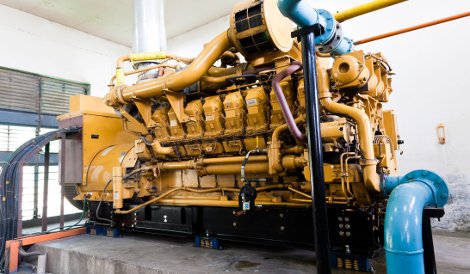It was an ominous coincidence when on the eve of the ten-year anniversary of the Northeast Blackout of 2003—a colossal disruption that left approximately 50 million people in the US and Canada without power—we were reminded once again just how vulnerable our power grid really was, when Superstorm Sandy crunched into the East Coast with catastrophic results.
While the two events took place nearly a decade apart, they bookend what has been a transformative decade for the nation’s IT infrastructure. Today, with organizations increasingly relying on sophisticated data storage and data management solutions, the operational continuity of enormous segments of vital industries is dependent on the ability of data centers to prepare for and recover from significant power disruptions.
While big events like Sandy can obviously have widespread impact, the big headline-grabbing disasters are really only the tip of the outage iceberg. In fact, the number of large outages (power interruptions that impact more than 50,000 individuals) has been increasing over the last two decades. In 2011 and 2012 the Department of Energy reported that the US faced the most billion-dollar power outages within such a time span on record. And according to a 2013 Ponemon Institute study that surveyed nearly 600 US-based data center professionals, more than nine in 10 data centers experienced an unplanned outage in the last two years.
Having an emergency response plan and disaster recovery process in place is the best defense against the risk of downtime and the subsequent interruption to business continuity. Following are the fundamental resources, relationships, systems and strategies that will help to keep your data center up and running:
Generating protection
Investing in high-quality emergency generators is an obvious and basic first step. Once the right generator is chosen, proper site selection (to avoid flood prone locations) and the implementation of a regular maintenance and testing regimen are essential.
Don’t interrupt
Sometimes it can take a few seconds or minutes to fully cross over to generator power. For data centers, even those few seconds are too long, so an uninterrupted power supply (UPS) is highly recommended. A UPS eliminates the gap between the moment of power loss and the subsequent generator startup. You should work closely with specialists to determine what specific UPS architecture is the right fit for your system and facility.
Fuel up
Remember that your emergency plan is only as strong as your weakest link. Do not let that link be your fuel supply. One of the most common mistakes that many data centers make is fail to secure a reliable source of fuel. The best providers of emergency fuel services not only offer a delivery guarantee, they have the solid infrastructure and diverse resources to back it up.
Training days
Any effective emergency plan includes a detailed and ongoing training component. “Set it and forget it” is not good enough for any team of IT or data center professionals. A rigorous and repetitive training and evaluation program is absolutely essential. That plan must also be a living document that evolves over time to adjust to new technical, regulatory and operational realities. While every individual plan is different—and will necessarily accommodate the specific characteristics of your data center—one thing that is universal is the need to continually assess employee response and to periodically reevaluate your maintenance, training and security procedures.
At a time when outages are on the rise and billions of dollars are at stake, data centers have more motivation than ever before to design an emergency response plan that will minimize the damage and disruption of even the most significant and sustained power interruptions. Even a small outage can be a big deal, and ensuring that your emergency response plan covers the basics outlined above is a great way to ensure that your facility is prepared for and protected against the worst impact of power emergencies.
About the author: Bob Kenyon is executive VP of sales and business development at Atlas Oil Company.
Disclaimer: Views expressed are those of the author and do not necessarily represent the views of data center dynamics

